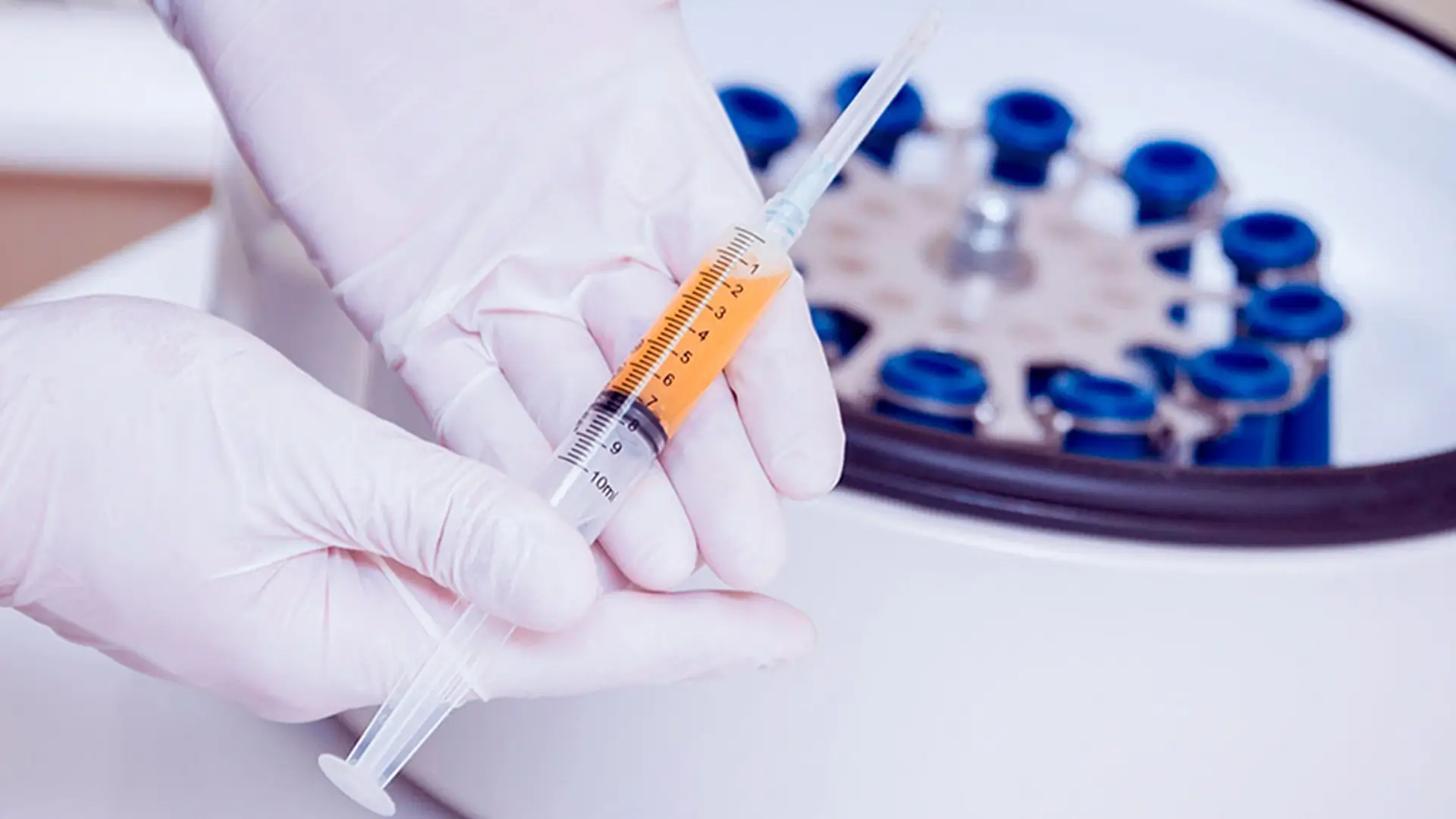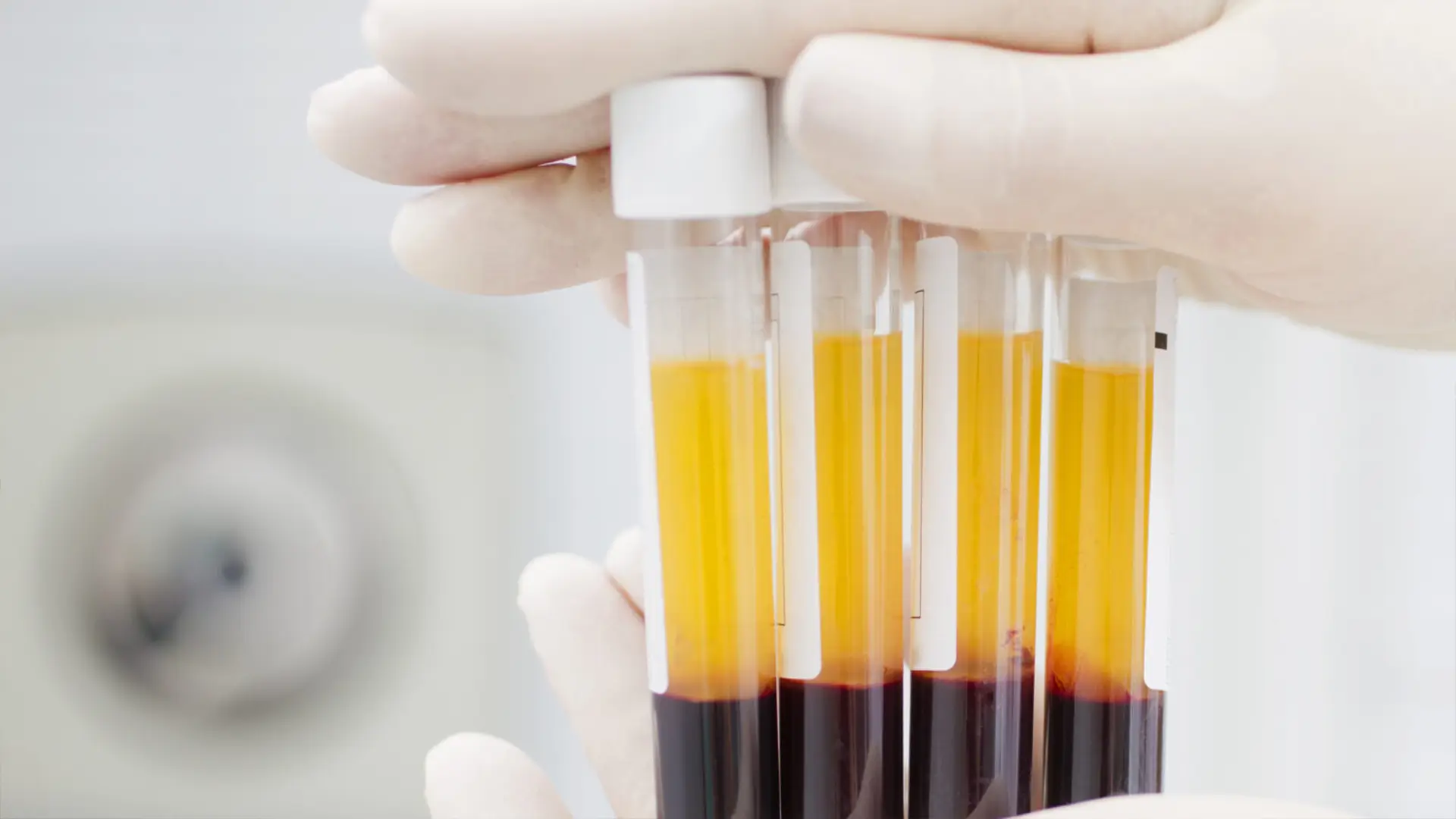PRP (Platelet Rich Plasma) Treatment
PRP is a concentrated form of plasma, enriched with a higher concentration of platelets than found in normal blood. Platelet-rich plasma (PRP) treatment has emerged as a promising therapy in orthopedics, using the body’s own healing mechanisms to address various musculoskeletal conditions. This treatment uses the regenerative properties of platelets to accelerate tissue repair and promote healing in injuries and degenerative conditions.
What Is PRP (Platelet Rich Plasma) Treatment?
PRP treatment involves extracting a small sample of the patient’s blood, which is then processed to isolate the platelets and plasma. This concentrated PRP solution is then injected into the site of injury or tissue damage, where it releases growth factors and cytokines to stimulate the body’s natural healing processes. In orthopedics, PRP therapy is used to treat a range of conditions, including tendon injuries, osteoarthritis, ligament sprains, and muscle strains.
What is plasma, and what are platelets?
Plasma is the liquid component of blood, primarily composed of water, proteins, and electrolytes. Platelets, also known as thrombocytes, are small cell fragments present in blood that play a crucial role in clotting and wound healing. When activated, platelets release growth factors and other bioactive proteins that initiate tissue repair and regeneration. In PRP treatment, the concentration of platelets is increased to enhance their therapeutic effects in promoting tissue healing and regeneration.

How are PRP injections performed?
PRP injections are typically performed as outpatient procedures with the following steps.
Collection
The procedure begins with the collection of a small sample of the patient’s blood, typically from the arm, using a sterile needle and syringe.
Processing of Blood
The blood sample is then placed into a specialized centrifuge or processing system that spins it at high speeds to separate its components. This separates the platelets and plasma from other blood components, such as red blood cells and white blood cells.
Isolation of PRP
After centrifugation, the platelet-rich plasma (PRP) is carefully extracted from the rest of the blood components. The resulting PRP solution is highly concentrated in platelets and growth factors, ready for therapeutic use.
Preparation of Injection Site
Before the injection, the area to be treated is cleaned and sterilized to minimize the risk of infection. In some cases, a local anesthetic may be administered to numb the injection site and reduce discomfort.
Guided Injection
Using techniques such as ultrasound or fluoroscopy for precision, the orthopedic doctor locates the target area for injection. This ensures accurate placement of the PRP solution into the injured or damaged tissue or joint.
Injection Administration
The PRP solution is then injected into the targeted area using a fine needle. The injection may be administered in a single location or distributed across multiple sites, depending on the extent and nature of the injury or condition being treated.
Post-Injection Care
After the injection, patients are typically monitored for a short period to ensure there are no immediate adverse reactions. They may receive post-procedure instructions regarding activities to avoid, any medications to take, and self-care measures such as icing the injection site.
Follow-Up:
Follow-up appointments may be scheduled to monitor the patient’s progress, assess the response to treatment, and determine if additional PRP injections or alternative therapies are needed for optimal healing.
Recovery of PRP Treatment?
The recovery process following PRP treatment varies depending on the specific condition being treated and the individual’s overall health. In many cases, patients can resume light activities immediately after the procedure, although strenuous exercise and heavy lifting may not be advised for a short period to allow for optimal healing.
Some patients may experience mild discomfort or swelling at the injection site, which usually resolves within a few days. It’s essential to follow any post-procedure instructions provided by the healthcare provider, which may include icing the area, taking over-the-counter pain relievers, and avoiding certain medications or activities that could interfere with healing.
Most patients start to notice improvements in their symptoms within a few weeks after PRP treatment, although the full benefits may take several weeks to months to manifest fully. Follow-up appointments may be scheduled to monitor progress and determine if additional treatments are necessary.
How do PRP injections work?
PRP injections work by harnessing the regenerative properties of platelets to promote tissue repair and healing. Platelets contain a multitude of growth factors, cytokines, and other bioactive proteins that play essential roles in the body’s natural healing processes. When concentrated into a PRP solution and injected into an injured or damaged area, these platelet-derived substances stimulate cell proliferation, collagen production, and angiogenesis (the formation of new blood vessels).
By enhancing the body’s innate healing mechanisms, PRP injections can accelerate the repair of injured tissues, reduce inflammation, and alleviate pain associated with various orthopedic conditions such as tendon injuries, osteoarthritis, and ligament sprains. Additionally, PRP therapy is believed to modulate the immune response, potentially minimizing the risk of chronic inflammation and promoting long-term tissue regeneration.

What are the Benefits of PRP Treatment?
Platelet-rich plasma (PRP) treatment offers several potential benefits for patients seeking non-surgical solutions to orthopedic injuries and degenerative conditions. By harnessing the body’s natural healing mechanisms, PRP therapy can promote tissue repair, reduce pain, and improve function in affected areas. Some of the key benefits of PRP treatment include:
Tissue Regeneration
PRP injections stimulate the body’s natural healing processes, promoting the regeneration of injured or damaged tissues.
Pain Relief
PRP therapy can help alleviate pain associated with various orthopedic conditions, including osteoarthritis, tendon injuries, and ligament sprains.
Improved Function
By enhancing tissue repair and reducing inflammation, PRP treatment can improve joint function and mobility, allowing patients to regain their range of motion and participate in daily activities more comfortably.
Minimally Invasive
PRP injections are minimally invasive procedures that can be performed on an outpatient basis, typically requiring little to no downtime for recovery.
Customized Treatment
PRP therapy can be tailored to meet the individual needs of each patient, with treatment plans adjusted based on the severity of the condition and the patient’s response to therapy.
Do PRP injections have side effects or risks?
While PRP treatment is generally considered safe, like any medical procedure, it carries some potential risks and side effects. These may include:
Pain or Discomfort
Mild pain or discomfort at the injection site is common and usually temporary.
Swelling
Some patients may experience swelling or bruising at the injection site, which typically resolves within a few days.
Infection
Although rare, there is a small risk of infection at the injection site, particularly if proper sterile techniques are not followed.
Allergic Reaction
While extremely rare, some patients may have an allergic reaction to components in the PRP solution or the materials used during the procedure.
Tissue Damage
Improper injection technique or placement may result in tissue damage or nerve injury, although this is uncommon when performed by a trained healthcare provider.
It’s essential for patients considering PRP treatment to discuss potential risks and benefits with their healthcare provider and to follow all post-procedure instructions carefully to minimize the risk of complications.
Conclusion
In conclusion, PRP Treatment represents a groundbreaking approach to orthopedic care, offering patients a safe, effective, and minimally invasive alternative to traditional treatments. As pioneers in regenerative medicine, Comprehensive Spine Center Regenerative Medicine is dedicated to providing cutting-edge therapies like PRP to help patients achieve optimal outcomes and regain their quality of life. If you’re suffering from a musculoskeletal condition or are interested in exploring regenerative options, we encourage you to schedule a consultation with our experienced team today. Together, we can develop a personalized treatment plan to address your unique needs and get you back to doing what you love.
Frequently Asked Questions
Platelet-rich plasma (PRP) treatment is a medical procedure where a concentration of a patient’s own platelets is injected into injured or damaged tissues to promote healing. PRP contains growth factors that stimulate cell repair and regeneration.
Platelet-rich plasma treatment for knee pain involves injecting PRP into the knee joint to reduce inflammation, promote tissue healing, and alleviate pain. It is commonly used for conditions like osteoarthritis and tendon injuries.
Platelet-rich plasma treatment for hair growth helps stimulate hair follicles, promote new hair growth, and increase hair thickness. PRP injections into the scalp can enhance hair restoration and are often used for conditions like androgenic alopecia.
Side effects of platelet-rich plasma treatment are generally minimal and may include mild pain, swelling, or bruising at the injection site. Since PRP uses the patient’s own blood, the risk of allergic reactions or infections is very low.
Aftercare for platelet-rich plasma injections includes avoiding strenuous activities for a few days, keeping the injection site clean and dry, and following any specific instructions from your healthcare provider. It’s also important to avoid anti-inflammatory medications, as they can interfere with the healing process.

